Discover 11 hidden attractions, cool sights, and unusual things to do in Ningbo (China). Don't miss out on these must-see attractions: Tianyi Ge, Qing'an Guildhall, and Ningbo Museum. Also, be sure to include Sacred Heart Cathedral in your itinerary.
Below, you can find the list of the most amazing places you should visit in Ningbo (Zhejiang).
Table of Contents
Tianyi Ge
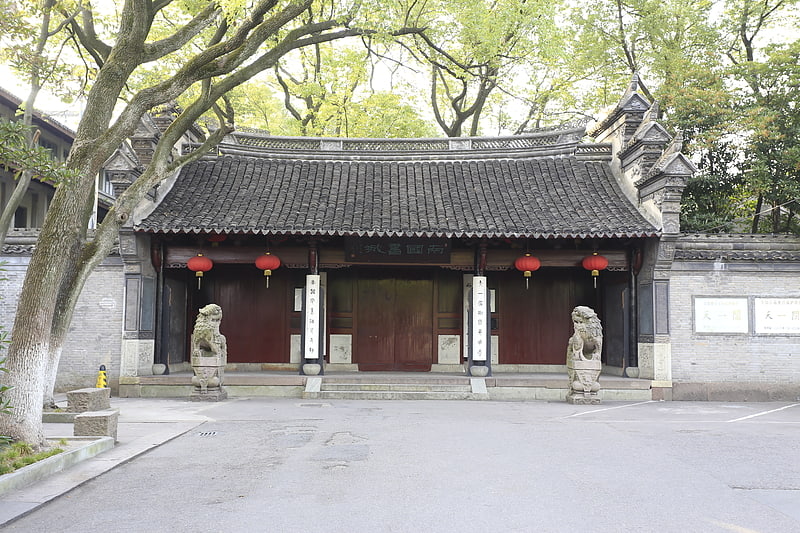
Also known as: 天一阁
Tourist attraction in Ningbo. The Tianyi Ge, translated as Tianyi Pavilion or Tianyi Chamber, is a library and garden located in Ningbo, Zhejiang Province, China. It is the oldest existing library in China. Founded in 1561 by Fan Qin during the Ming dynasty. In its heyday, it boasted a collection of 70,000 volume of antique books.
The name Tian Yi refers to the concept of cosmic unity first described in a Han dynasty commentary to the Book of Changes. In Chinese alchemy Tianyi is linked to the element of water, thus it was believed by providing a watery name would protect the library against fire damage.
The Qianlong Emperor of the Qing dynasty visited Tianyi Ge, and ordered officials to draw schematics of Tianyi Ge's building plan and book cases as prototype to build several imperial libraries including Wenyuan Ge in the Forbidden City, and Wenjin Ge in the Chengde Mountain Resort to house the Siku Quanshu encyclopedia.
After the Second Opium War, the British took many books from the libraries collection of geography and history texts. These losses were followed by further thefts by local thieves. By 1940, the collection dwindled to less than 20,000 volumes. After the founding of the People's Republic of China, due to governmental effort and donations by private collectors, the collection recovered somewhat to about 30,000 volumes, mostly rare antique Ming dynasty printed and hand copied volumes.
In 1982, Tianyi Ge was established by the Chinese authorities as a National Heritage Site. The Qin Family Drama Stage is also located in the complex.
The walls were specially constructed to prevent fire.[1]
Address: 39 Tianyi St | 天一街39号, 315010 宁波
Qing'an Guildhall
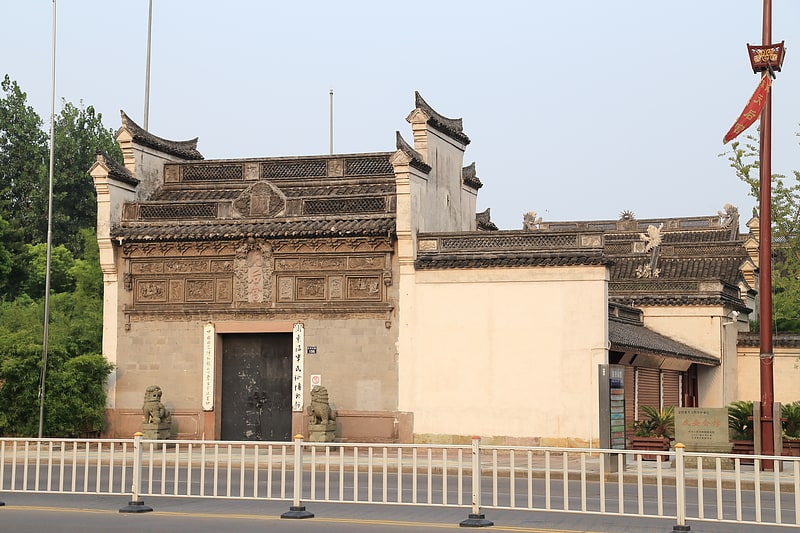
Also known as: 庆安会馆
Museum in Ningbo, China. The East Zhejiang Maritime Affairs/Folk Custom Museum is a museum located in Yinzhou District in Ningbo, Zhejiang, China. It is located in the Qing'an Guildhall, a reconstructed complex which once housed a temple to the sea-goddess Mazu. Originally built in 1191, the complex was destroyed and rebuilt several times. After its mid-19th century restoration by Ningbo's guild of Fujianese merchants, it was acclaimed as one of the most beautiful temples in China and was used by the merchants as their guildhall. It was destroyed in 1949 as the Communists were fighting the Chinese Civil War, and suffered further harm during the Cultural Revolution, but was repaired from 1997 to 2001. It reopened in June 2001 as a museum dedicated to eastern Zhejiang's maritime history and local arts and crafts.
The museum has been listed as a Major Historical and Cultural Site Protected at the National Level since 2001. The museum's director is Huang Zhesu (黄浙苏).[2]
Ningbo Museum
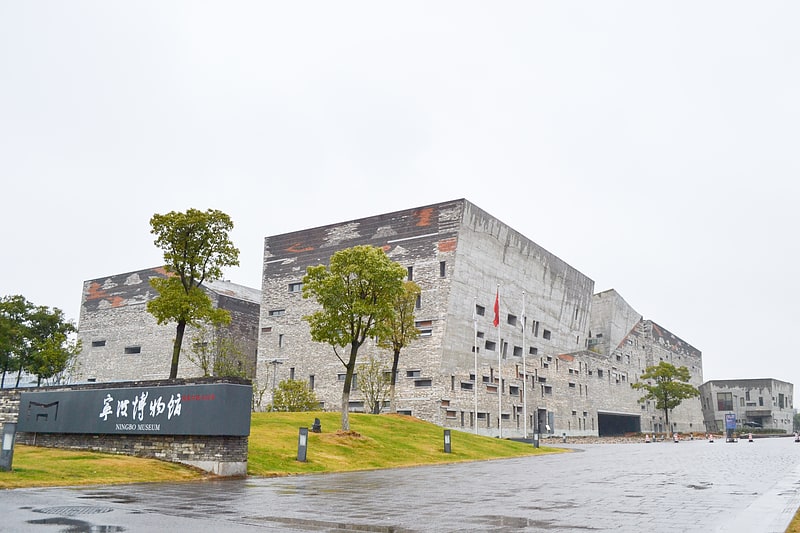
Also known as: 宁波博物馆
Museum in Ningbo, China. The Ningbo Museum, also known as the Yinzhou Museum or the Ningbo Historic Museum, is a museum in the city of Ningbo in Zhejiang Province, China. It is located in Yinzhou District and opened on December 5, 2008. The museum focuses on Ningbo area history and traditional customs.[3]
Sacred Heart Cathedral
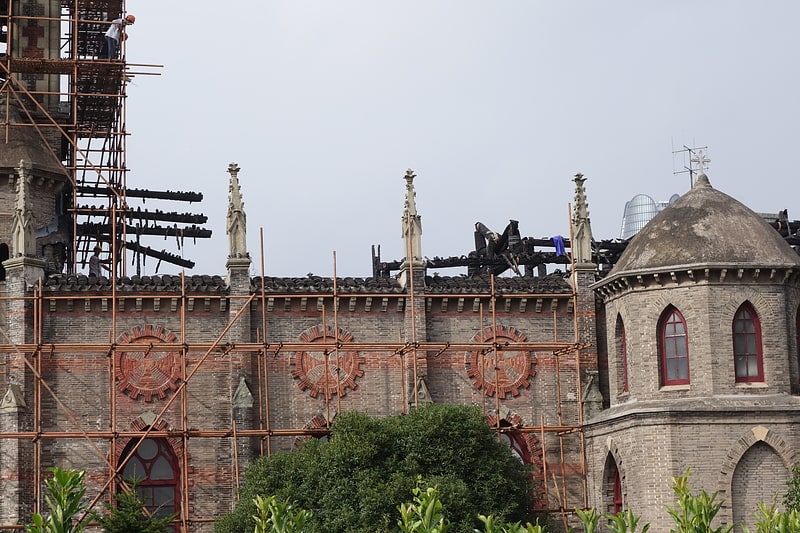
Also known as: 宁波耶稣圣心堂
The Sacred Heart Cathedral also alternatively called the Cathedral of the Seven Sorrows of Mary is a religious building located in the city of Ningbo in Zhejiang Province of the People's Republic of China.
It served as the headquarters of the Diocese of Ningbo (Dioecesis Nimpuovensis, 天主教宁波教区) which was created on 11 April 1946. It should not be confused with the Cathedral of Our Lady of the Assumption current seat of the diocese.
Its history began as the church the seven sorrows of Mary in 1872 being built in the Gothic style by the French Vincentians, as the seat of the Apostolic Vicariate of Chekiang dependent Fuchow for the time being elevated to cathedral in 1876; and closed in 1963; for a few years later reopen under another name in 1980; It was declared a national heritage in 2006; and finally it was partially destroyed by fire on July 28, 2014. As of 2018, the cathedral is fully restored.[4]
Tianyi Square
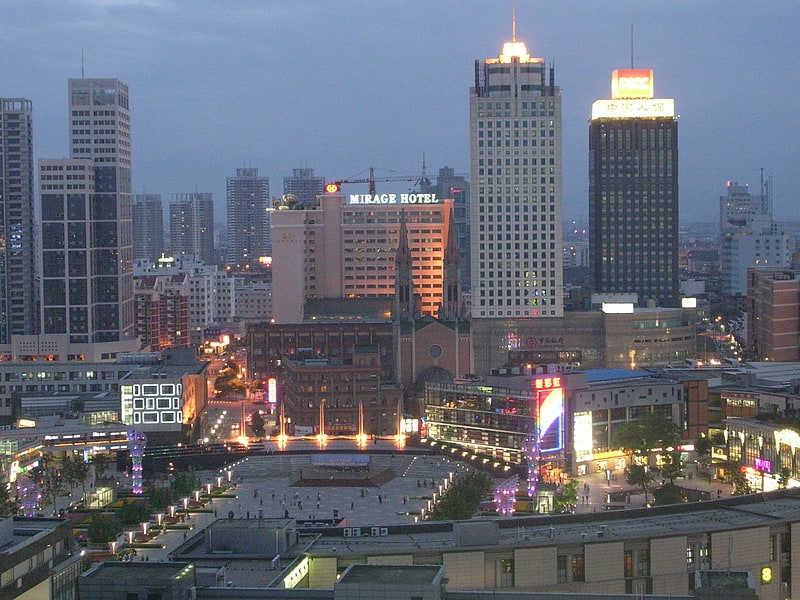
Also known as: 天一广场
Tianyi Square was the biggest square in Ningbo, Zhejiang province, China designed by architect Qingyun Ma.[5]
Dongqian Lake
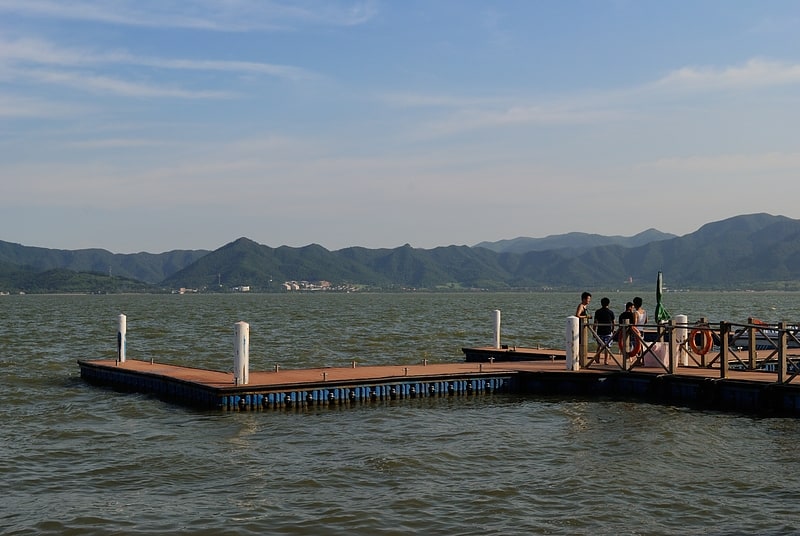
Also known as: 东钱湖
Lake in China. Dongqian Lake is a large freshwater lake in Yinzhou District, Ningbo in Zhejiang, China. It has a surface area of 20 square kilometres.[6]
Temple of King Ashoka
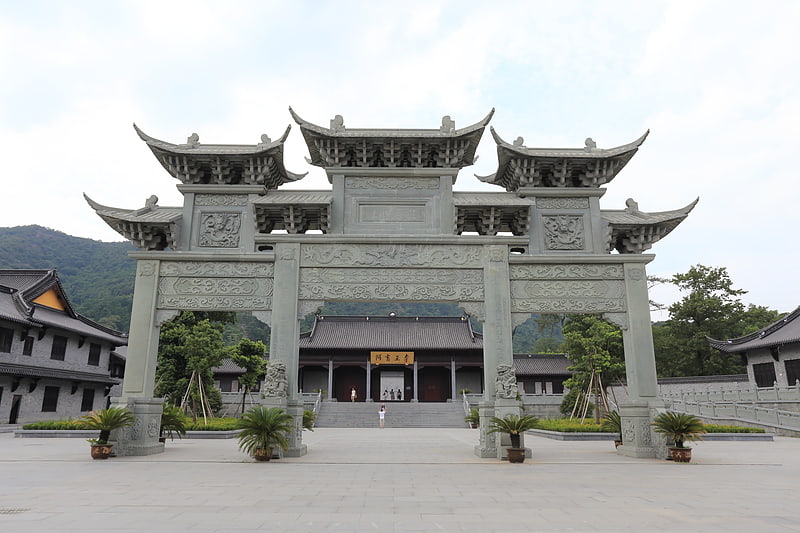
Temple in Ningbo, China. Temple of King Ashoka is a Buddhist temple located in Yinzhou District of Ningbo, Zhejiang, China.[7]
Qita Temple
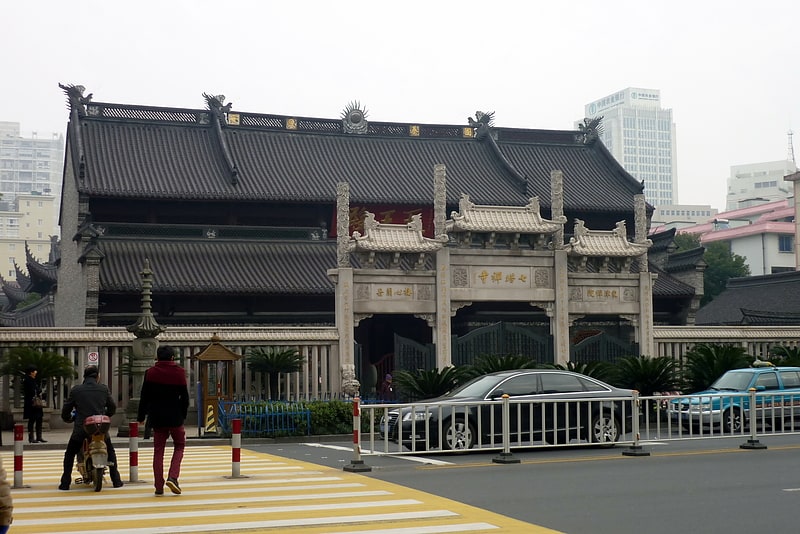
Also known as: 七塔寺
Temple in Ningbo, China. The Qita Chan Buddhist Temple, or Seven Pagodas Temple, is a Chan Buddhist temple located in the Yinzhou District of Ningbo, Zhejiang, China. It is the only major Chan Buddhist temple complex within the city proper of Ningbo.
It is listed as a "Han Chinese Buddhist Temple of National Significance". Since 2011 it has been listed as a relic being protected by the provincial government.
The history of the temple dates back to the Tang Dynasty (618-907) in 858 A.D. It was first called the Dongjin Chan Courtyard (东津禅院). The temple has gone through multiple cycles of destruction and re-building. At the beginning of the Qing Dynasty (1644–1911) seven pagodas were known to be placed in front of the entrance of the temple. Since then it has been given its present name. During the Qing Dynasty the temple was the site of the dissemination of the Linji school of Buddhism.
The temple was damaged during the Cultural Revolution and was restored in 1980.
The temple is accessible via Line 1 of Ningbo Rail Transit; the nearest station is Jiangxia Bridge East Station.[8]
Guanzong Temple

Temple. Guanzong Temple is a Buddhist temple located in Haishu District of Ningbo, Zhejiang, China.[9]
Baoguo Temple
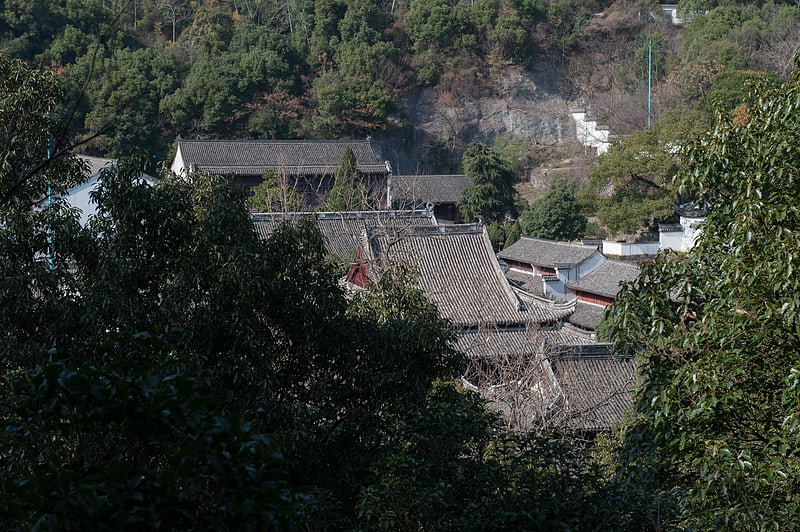
Also known as: 保国寺
Historical wooden Buddhist temple. The Baoguo Temple is a Mahayana Buddhist temple located in the Jiangbei district, 15 kilometres north of Ningbo, in Zhejiang Province, People's Republic of China. It is noted as the second oldest surviving wooden structure in southern China since the main hall of the present temple dates back to 1013 AD during The Northern Song Dynasty.[10]
Address: Anshang Village, Jiangbei District, 315000 Ningbo
Zhaobao Mountain
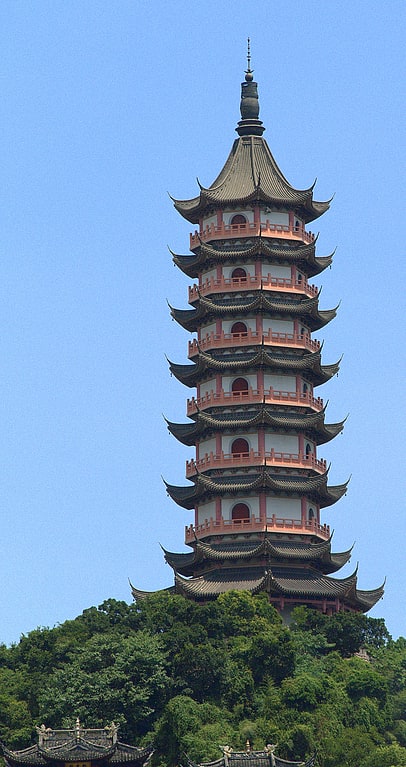
Also known as: 招宝山
Zhaobao Mountain also known as Zhaobao Mount or Zhaobao Hill. Located on the north bank near the mouth of the Yong River at the east end of the town of Zhenhai 12 miles northeast of the city of Ningbo.[11]